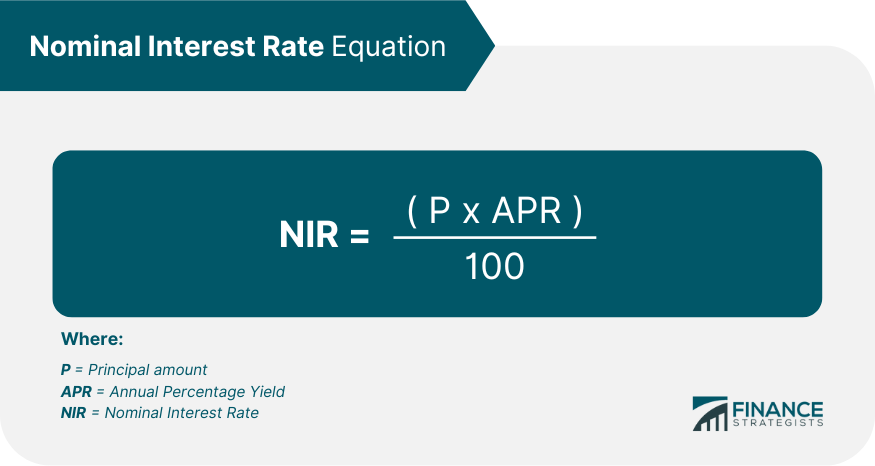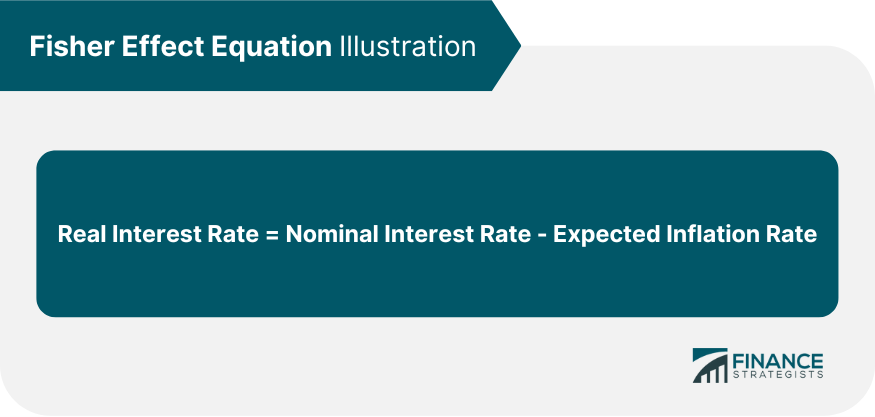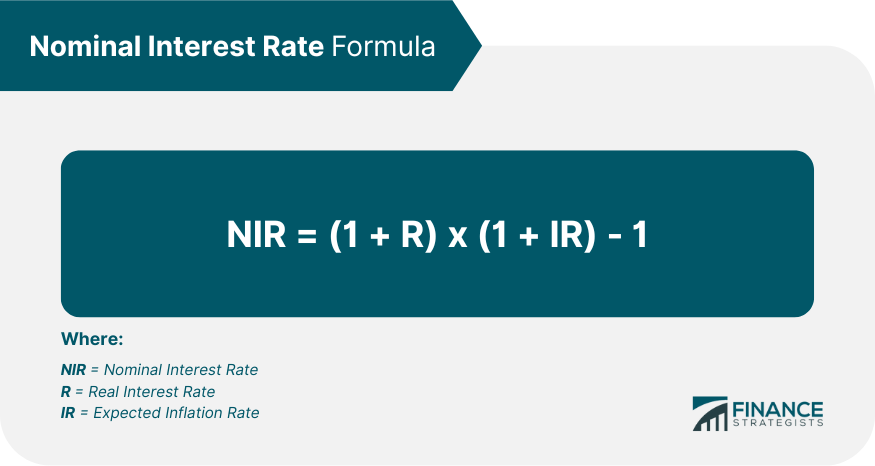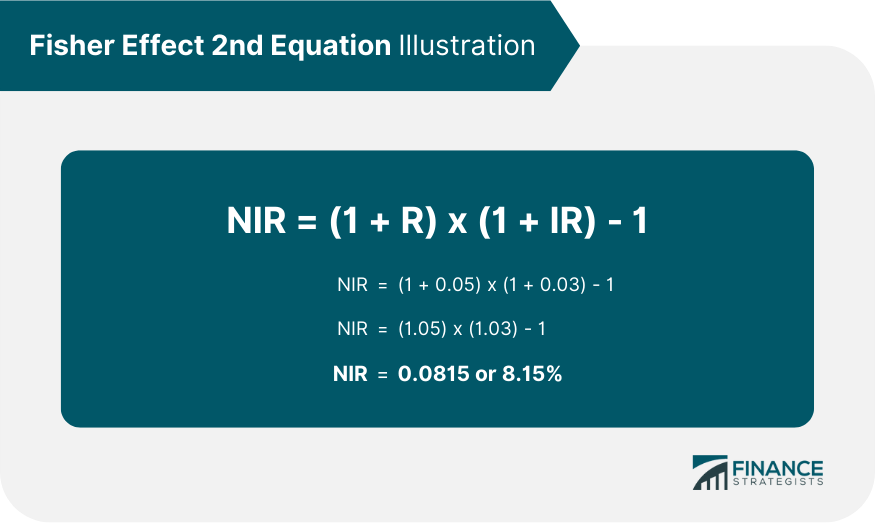A nominal interest rate is the theoretical or stated interest rate on an investment, usually expressed as a percentage of the principal amount. The nominal interest rate doesn't take into account inflation and other factors that will erode the purchasing power of the investment over time. The nominal interest rate is the starting point for most investment decisions and analyses. Investors look at the possible gains against their risk profile, calculate a required return based on that information, and then compare it to available investments. There isn't one single formula used for determining what an individual's or company's Nominal Interest Rate is. One can calculate a nominal interest rate by using this equation: For example, if someone is looking to invest $100 with an annual interest rate of 12%, they would calculate the nominal interest rate as follows: The real interest rate takes into account inflation or deflation of purchasing power over time (the price level) whereas the Nominal Interest Rate does not factor this in. Well-known economist Irving Fisher coined the Fisher Effect which is a theory that describes the relationship between nominal and real interest rates. It states that the real interest rate of a savings account is actually the difference between the nominal interest rate and the expected inflation rate. In an equation, it can be illustrated as: Furthermore, the nominal interest rate can also be calculated through this formula: For example, a certain savings account carries a real interest rate of 5% at an expected inflation rate of 3%. To use the first equation under the Fisher Effect, we find that: Using the second equation under the Fisher Effect: Both equations produce an approximately similar result with the nominal interest rate at 8-8.15% The nominal interest rate is just one component of any investment decision and should never be used in isolation to make decisions about an investment, particularly given that inflation exists over time. The Fisher Effect helps provide clarity into understanding how real rates are determined based on expected future inflation levels. Why Does the Nominal Interest Rate Matter?
How to Calculate the Nominal Interest Rate

Example on How to Use a Nominal Interest Rate in an Investment Analysis

Difference Between Nominal Interest Rate and Real Interest Rate
The Fisher Effect


Fisher Effect Sample Illustration


Implication on the Use of Nominal Interest Rate
Nominal Interest Rate FAQs
A nominal interest rate is the theoretical or stated interest rate on an investment, usually expressed as a percentage of the principal amount. The nominal interest rate doesn't take into account inflation and other factors that will erode the purchasing power of the investment over time.
A nominal interest rate is the starting point for most investment decisions and analysis. Investors look at the possible gains against their risk profile, calculate a required return based on that information and then compare it to available investments. The real (or inflation-adjusted) interest rate takes into account inflation or deflation of purchasing power over time (the price level) whereas nominal interest rate does not factor this in.
The nominal interest rate can be found by using the following formula: (P * APR) / 100 = NIR where P = Principal amount, APR = Annual Percentage Yield and NIR = Nominal Interest Rate. If you are looking to invest $100 with an annual interest rate of 12%, you would calculate the nominal interest rate as follows: ($100 * .12) / 100 = .12 or 12%.
In financial analysis, nominal returns are typically used as a starting point for comparison across different investments. Inflation is often not taken into account when considering nominal returns since the intention of most investors is capital appreciation rather than preserving purchasing power or inflation-adjusted income. For this reason, nominal interest rates and real interest rate calculations can be used to analyze nominal returns and determine if the investment is appropriate for an investor's risk profile.
The Fisher Effect is a useful economic concept that helps to illustrate nominal interest rates. It provides insight into how real interest rate changes are affected by nominal interest rates and expected inflation levels.
True Tamplin is a published author, public speaker, CEO of UpDigital, and founder of Finance Strategists.
True is a Certified Educator in Personal Finance (CEPF®), author of The Handy Financial Ratios Guide, a member of the Society for Advancing Business Editing and Writing, contributes to his financial education site, Finance Strategists, and has spoken to various financial communities such as the CFA Institute, as well as university students like his Alma mater, Biola University, where he received a bachelor of science in business and data analytics.
To learn more about True, visit his personal website or view his author profiles on Amazon, Nasdaq and Forbes.











